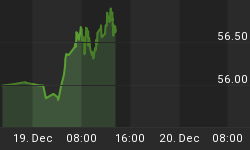President Trump is fond of railing against his handpicked Fed chair Jerome Powell, repeatedly saying he is not thrilled by his appointee or his policies. In a strongly worded polemic last year, he made it abundantly clear what he thought of the central bank:
“The only problem our economy has is the Fed. They don’t have a feel for the market,” he said on Twitter. “The Fed is like a powerful golfer who can’t score because he has no touch - he can’t putt!” Last week, he was at it again, saying the Fed made a mistake by hiking interest rates and putting the skids on the economy and the stock market, never mind the fact that US equities are on an amazing bull run again this year.
In a tweet, the president said the Fed’s quantitative tightening and continued shrinking of its balance sheet were “ridiculously timed” since there was little inflation to justify it, saying the economy would have expanded at 3 percent instead of the current projection of just 2.1 percent had the central bank stayed put.
Trump’s administration had forecast 3.2 percent growth for fiscal 2020, so the current levels must be really disconcerting for it.
Reiterating the president’s views, Trump’s top economic adviser, Larry Kudlow, said the White House wanted the Fed to cut rates and stop shrinking its balance sheet so as to protect the economy from weakness overseas. Although the current rate just shy of 2.5 percent is low by historical standards, it’s still the highest in more than a decade. Trump and Kudlow want the rate to be cut to around 2 percent.
Having your cake and eating it, too

(Click to enlarge)
Source: CNN Money
Trump, however, is unlikely to get his wish.
Regulators on the call have said they have not seen anything out of the ordinary in financial markets to reverse their policy and start cutting rates.
Related: Who Really Wins In Corporate Mega-Mergers?
Last week, five Fed officials touted the strength of the American economy and argued that the latest spate of weak data from the markets is likely to prove more fleeting than lasting.
No official is currently backing rate cuts.
In the past, the president’s meddling with the Fed has been unsettling to financial markets, with stock markets tumbling significantly the last time he attacked it. That’s the case because the central bank has for long operated on the presumption of independence from any political interference, with Trump’s administration being the only one on record to openly try to influence its decisions. Adding to the disquiet has been a lack of clarity on Trump’s options; specifically, whether he could in fact dismiss Powell.
According to the Federal Reserve Act, Powell can only be removed from the Fed’s board of governors for “cause”, a term that is generally understood to mean malfeasance rather than any disagreements over interest rates. However, it might still be lawful for Trump to remove Powell from his role as chairman. That’s the case because when Congress last amended the statute back in 1977, it failed to address the question of whether removal from the chairman role must be “for cause”.
Nevertheless, Trump’s wish for low-interest rates and a strong economy might be like wanting to have your cake after eating it.
According to former Fed governor, Robert Heller, if the economy was to be as strong as Trump wants it to be, the Fed would be left with little choice than to hike rates to contain it. That’s the case because economic expansions tend to trigger inflation more often than not, and runaway inflation erodes buying power and consumer confidence which eventually hurt growth. To tame inflation and prevent it from reaching levels that could harm the economy, central banks hike rates to make it harder for businesses and individuals to borrow money. This, in turn, keeps inflation in check and helps prevent the economy from overheating.
By continuing with rate hikes now when the economy is still growing, the Fed will create room for rate cuts to stimulate the economy when the next recession comes knocking. Some analysts have predicted that the US economy could be hit by a recession as soon as mid-next year.
By Alex Kimani for Safehaven.com
More Top Reads From Safehaven.com
















